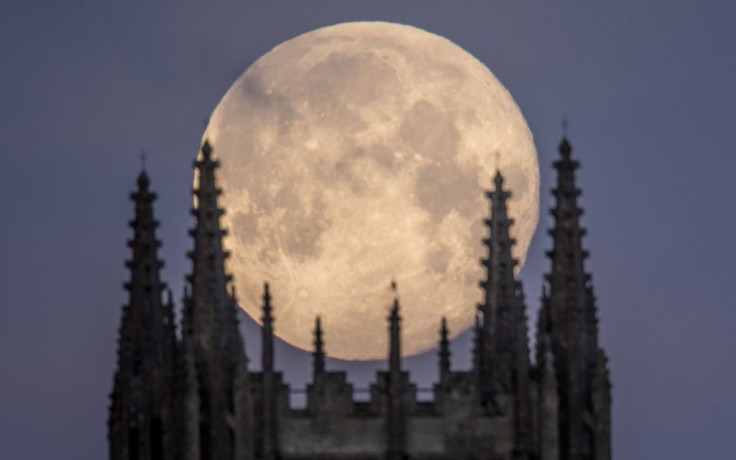Super Snow Moon: When And Where To Watch 2019's Largest And Brightest Supermoon

The super snow moon, 2019's largest and brightest supermoon, will be visible to skygazers in the United States on Feb. 19.
On Tuesday, the Moon will be 221,734 miles (356,846 kilometers) from Earth, resulting to the closest full moon to our planet in 2019, according to EarthSky. The Moon will reach its peak on the morning of Feb. 19 at 10:54 a.m. EST. But the best times to see the super snow moon will be on Monday and Tuesday nights, CNN reported.
For skygazers watching the super snow moon in New York City, the Moon will rise at 5:46 p.m. EST and set at 7:35 a.m. EST on Feb. 20, according to the U.S. Naval Observatory. Due to an optical illusion called the "moon illusion," the Earth's natural satellite will appear particularly large when it is close to the horizon.
Super snow moon was given this name because the full moon in February is known as the "full snow moon" among Native American tribes. This is due to the heavy snowfall that often occurs at that time of the year, according to the Old Farmer's Almanac.
Meanwhile, supermoons happen when the Moon's orbit brings it to its closest approach to Earth while the satellite is full. However, according to the almanac, it is unlikely that people would be able to differentiate between supermoons and typical full moons.
Other common names for February's full moon are the Bony Moon, Hunger Moon and Little Famine Moon, according to the almanac. This is because old tribes found it difficult to hunt during this time of the year due to the harsh temperatures and poor climate.
“When a full moon appears at perigee [its closest point to Earth] it is slightly brighter and larger than a regular full moon—and that's where we get a ‘supermoon’,” NASA said on its website, noting that the phrase was coined in 1979.
Although the Feb. 19 supermoon will be closer to Earth, it won't be as colorful as the "super blood wolf moon" last month. The total lunar eclipse amazed stargazers across the northern hemisphere when the Moon turned a stunning shade of red. The celestial event was the only total lunar eclipse for 2019.
The Moon continues to be a fascinating subject for mankind. On the heels of China's first foray into the "dark" side of the Moon, SpaceIL and state-owned Israel Aerospace Industries has announced that it will be launching the first private spacecraft to land on the Earth's satellite. The spacecraft, called Beresheet (or Genesis), will be taking off from Florida, propelled by a SpaceX Falcon rocket launch.
© Copyright IBTimes 2024. All rights reserved.





















